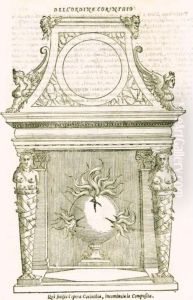Sebastiano Serlio Paintings
Sebastiano Serlio was an Italian architect and theoretician who was born in Bologna in 1475. He was one of the most prominent architects of the 16th century and is best known for his treatise on architecture, 'Sette Libri dell'Architettura' (Seven Books of Architecture). Serlio played a significant role in disseminating the ideas of the Renaissance and the Vitruvian principles of architecture across Europe, particularly in France, where he spent a significant portion of his career.
Serlio's work as an architect was influenced by his studies under Baldassare Peruzzi and his association with other prominent figures such as Raphael and Giulio Romano. His architectural style was characterized by a harmonious blend of classical elements with the innovations of the High Renaissance. In his treatise, which was published in several parts between 1537 and 1575, Serlio helped to standardize the classical orders and introduced practical advice for the construction of buildings, ranging from private houses to churches.
Beyond his architectural practice, Serlio's treatise had a profound impact on the development of architecture in Europe. His books were among the first on architecture to be printed and widely distributed, allowing his ideas to reach a broad audience. The treatise was translated into several languages and became a key reference for architects for centuries to come. Serlio's legacy is evident in the spread of the Renaissance architectural style beyond Italy, influencing buildings throughout Europe and shaping the development of architectural education.
Sebastiano Serlio died in Fontainebleau, France, in 1554, leaving behind a body of work that not only included his built projects but also his written work, which continued to be a vital source of architectural theory and practice well after his death. His contributions to architecture are remembered for their clarity, practicality, and influence on the canon of Western architecture.
